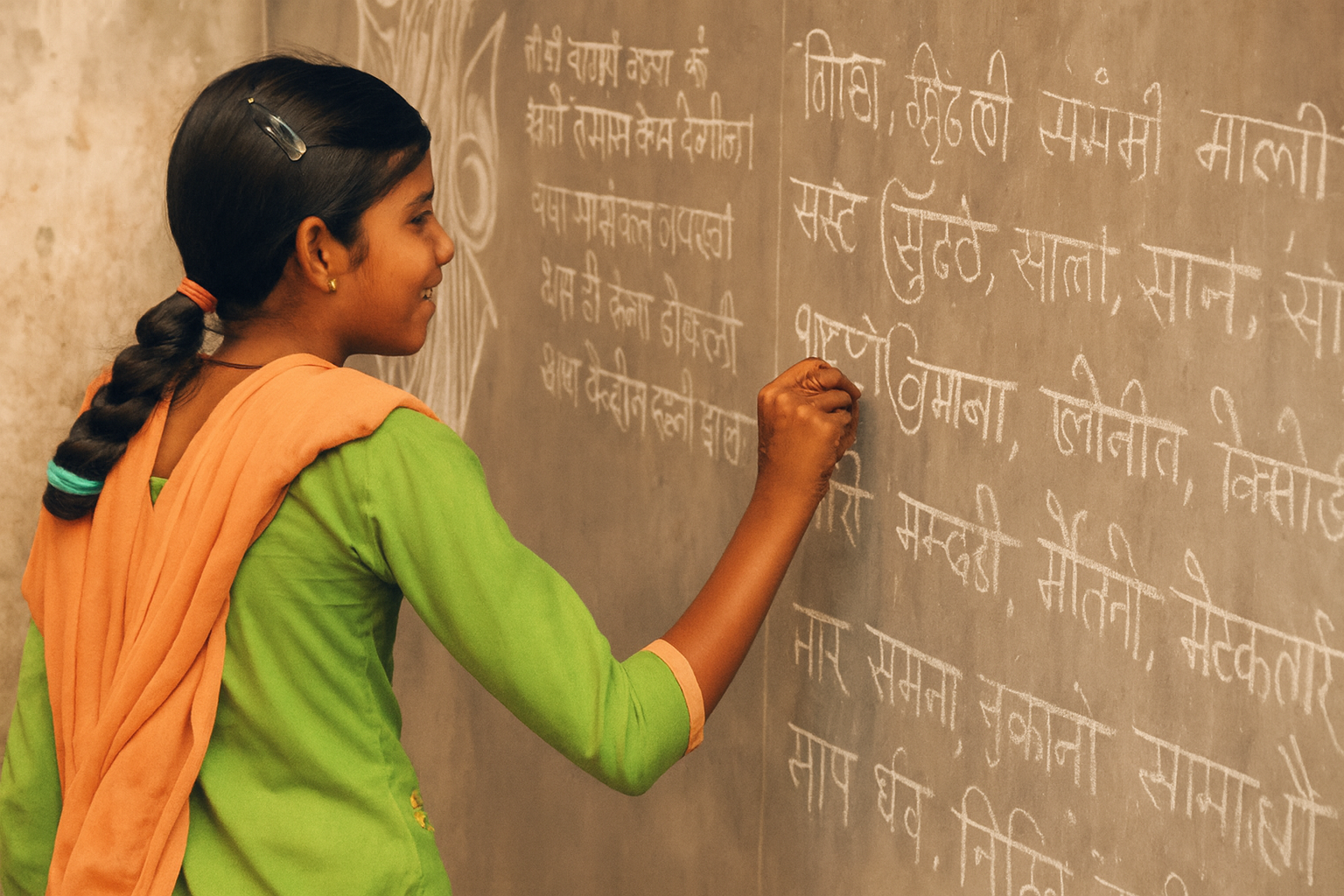Introduction
Determining the hardest language in India is more than curiosity—it’s about understanding India’s linguistic depth. In this article, we ask: which is the hardest language in india? We’ll explore rankings, features, and insights to help you understand why certain Indian languages challenge even committed learners.
Table of Contents
- Why Some Indian Languages Are Hard to Learn
- Malayalam: Often Cited as the Hardest Language in India
- Telugu: The “Italian of the East” and Its Complexities
- Other Contenders: Sanskrit, Tamil, Marathi and More
- Criteria Behind Calling a Language “Hard”
- Side-by-Side Comparison: Top 10 Hardest Languages in India
- Why Context Matters in Language Difficulty
- Conclusion
- FAQs
1. Why Some Indian Languages Are Hard to Learn
India’s linguistic landscape is vast. Major language families include Indo‑Aryan (78%) and Dravidian (19%) . Smaller families—like Austroasiatic or Sino‑Tibetan—add diversity. Script systems, grammar, and phonetics vary widely, contributing to difficulty.
2. Malayalam: Often Cited as the Hardest Language in India
Multiple sources point to Malayalam as perhaps the toughest language in India. A Ling‑app article calls it “the toughest language with complex spoken and written grammar” . On Brainly, one user states: “In India, Malayalam … is the toughest language to learn compared to any other language in India. There are a few rare sounds … that often do not exist in other languages.”
Additionally, a Reddit discussion shares:
“Malayalam and Tamil are very difficult.”
Even for multilingual Indians, Malayalam stands out for its scripts, phonology, and grammatical intricacies.
3. Telugu: The “Italian of the East” and Its Complexities
Another contender is Telugu. An article on Kochiva describes it as “one of the most difficult language in the world to learn … known as the ‘Italian of the East,’” highlighting its script, rhythmic structure, and challenging phonetics.
4. Other Contenders: Sanskrit, Tamil, Marathi and More
Though not always ranking #1, several Indian languages feature in discussions about difficulty:
- Tamil: Often mentioned alongside Malayalam for its complex morphology and classical structure (Reddit mention).
- Sanskrit: While less discussed in user comments, its classical grammar and Vedic influence can present steep learning curves.
- Marathi: Less commonly cited as hardest, but it has unique phonetic and script subtleties.
A blog titled “Top 10 Toughest Language in India” promises a broader list, including Malayalam and Sanskrit though specific rankings in that piece weren’t fully visible in preview.
5. Criteria Behind Calling a Language “Hard”
When evaluating most hardest language in india, consider:
- Script complexity: Are letters ornate? Is there a lot of conjunct formation?
- Phonetic range: Does the language use sounds unfamiliar to other languages?
- Grammar complexity: Is morphology rich or irregular?
- Verbal and syntactic structure: Does the language use tenses/cases difficult for learners?
- Resource availability: Are learning tools and teaching aids accessible?
Malayalam, for instance, scores high on script and phonetics, while Telugu adds a challenging rhythm and orthography.
6. Side-by-Side Comparison: Top 10 Hardest Languages in India
Below is an illustrative list (not strict ranking) of “top 10 hardest language in india” based on aggregated commentary and sources:
- Malayalam – Complex grammar, rare phonemes
- Telugu – Unique rhythm, dense script
- Tamil – Rich classical structure, agglutinative grammar
- Sanskrit – Highly inflected and classical in structure
- Kannada – Similar story as other Dravidian scripts, challenging phonology
- Marathi – Devanagari-based yet nuanced phonetics
- Hindi (for non-native) – Devanagari plus aspirated consonants
- Odia – Unique Odia script and phonetic quirks
- Manipuri (Meitei) or other North‑East languages – Distinct scripts & roots
- Minor/Endangered languages like Pangwali or Sirmauri – Rare scripts and scarce learning resources
This list reflects breadth in difficulty: from mainstream Dravidian tongues to lesser-known Pahari or tribal languages.
7. Why Context Matters in Language Difficulty
What makes a language tough often depends on your linguistic background:
- South Indians may find Telugu or Malayalam within language families easier.
- Non‑native speakers facing unfamiliar scripts (like Malayalam’s chillu letters or Telugu’s rounded glyphs) face steeper barriers.
- Modern vs. classical dialects (e.g., Tamil or Sanskrit) differ widely in difficulty.
- Scarcity of learning materials—for languages like Pangwali or Sirmauri—makes them difficult simply due to accessibility.
Conclusion
Malayalam often tops the list as the hardest language in India, thanks to its intricate script and rare phonetics. Telugu and Tamil also rank high for their complexity. The “hardest language in the india” can vary based on your first language, exposure, and learning resources.
Ultimately, every Indian language has beauty and challenge. The most difficult might just be the most rewarding to learn.
FAQs
1. Which is the hardest language in India?
Malayalam is commonly regarded as the hardest due to its complex grammar and script.
2. What makes Malayalam difficult compared to other Indian languages?
Features include rare sounds, dense script rules, and extensive morphology.
3. Is Telugu the most hardest language in India?
Telugu is often cited as very difficult, thanks to its rhythmic script and phonetic depth.
4. Are less-known languages like Pangwali or Sirmauri among the hardest?
They’re not widely learned, making them hard due to limited materials and exposure, though not necessarily grammatically harder.
5. Does native background affect difficulty?
Yes. A South Indian learner may find Malayalam easier, while for others, unfamiliar script and structure amplify difficulty.


























